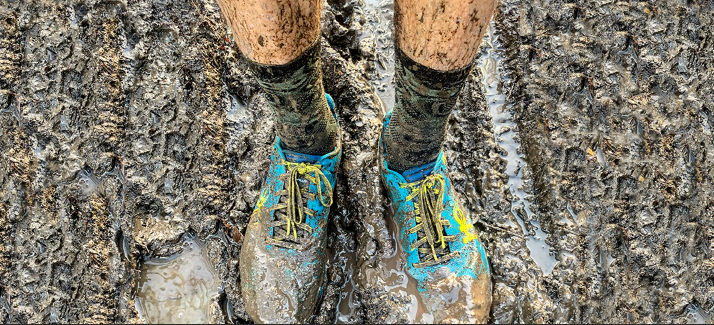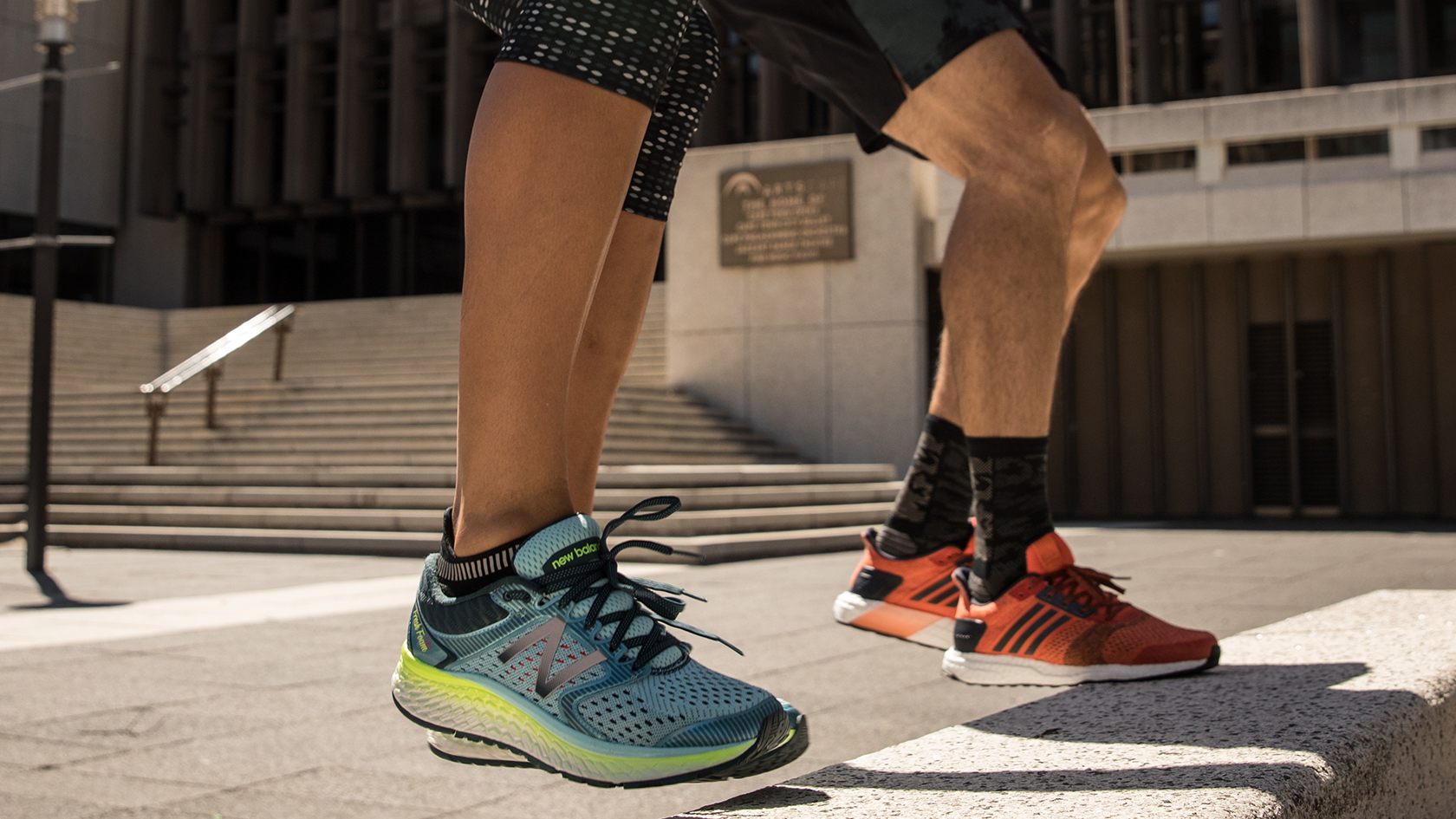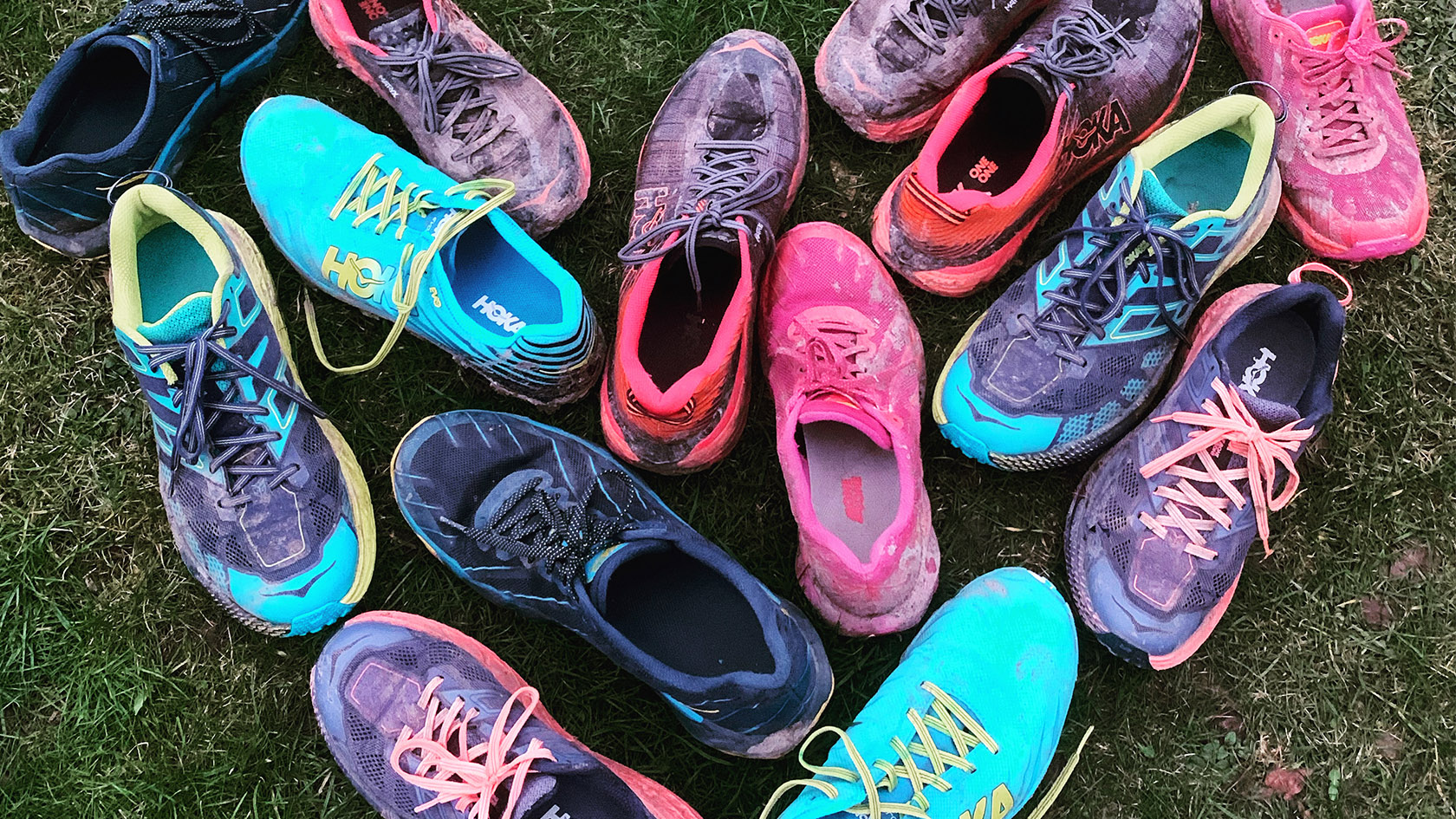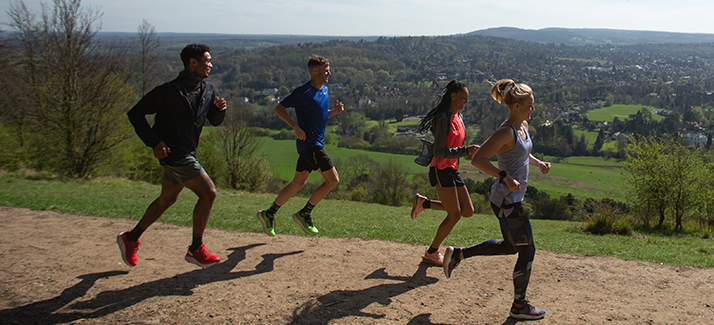Choosing the right road running shoes is about so much more than just style or brand—it’s a decision that can shape your entire running experience. Every time your foot hits the pavement, your shoes are working hard to absorb shock, protect your joints, and keep your stride steady. The right pair will cushion each step, support your natural movement, and help you run more efficiently, whether you’re tackling a quick 5K or building up to a marathon.
On the flip side, running in shoes that don’t fit well or aren’t suited to your needs can quickly take the joy out of your runs. Discomfort, blisters, and even injuries like shin splints, plantar fasciitis, or knee pain often start with the wrong footwear. In this guide, we’ll walk you through everything you need to know to make a confident, informed choice and enjoy every mile on the road ahead.
What Are Road Running Shoes?
Road running shoes are purpose-built for running on hard, even surfaces such as pavements, city streets, and treadmills. They are engineered to deliver lightweight performance, optimal shock absorption, and a smooth ride on unforgiving ground. Unlike trail shoes, which have aggressive lugs for grip on mud and rocks, road shoes feature flatter, more flexible outsoles that promote efficient forward motion and reduce pounding on your joints.
Key characteristics of road running shoes:
- Cushioning → Enhanced midsoles absorb shock and reduce impact.
- Lightweight → Designed for speed and agility, with minimal bulk.
- Breathable Uppers → Mesh materials keep your feet cool and dry.
- Smooth Outsoles → Provide reliable traction on tarmac and concrete without deep lugs.
These shoes are ideal for city runners, commuters, and anyone training for road races or marathons.
How Are Road Running Shoes Different from Trail or Hybrid Shoes?
Choosing the right shoe for your running environment is essential for comfort and performance. Here’s how road, trail, and hybrid running shoes compare:
| Feature | Road Running Shoes | Trail Running Shoes | Hybrid Running Shoes |
|---|---|---|---|
| Cushioning | High for shock absorption on hard surfaces | Moderate, with added protection for rough terrain |
Balanced for mixed surfaces |
| Grip | Smooth outsole, minimal tread | Deep lugs for traction on mud and rocks | Shorter lugs, moderate grip |
| Weight | Lightweight for speed | Heavier, reinforced for durability | Medium weight |
| Support | Focus on forward motion | Extra ankle and lateral support | Combination of both |
| Best For | Pavements, roads, treadmills | Muddy, uneven, off-road terrain | Mixed routes (road + light trail) |
Road running shoes are perfect for urban environments, while trail shoes are built for off-road adventures. Hybrid shoes offer a compromise for those who split their runs between paths and pavements.
How Do I Know What Type of Runner I Am?
What Is Gait Analysis?
Ever wondered why some runners swear by stability shoes while others float along in neutral trainers? The answer lies in your gait—the unique way your body moves when you run. Gait analysis is a simple, science-backed process that helps you discover how your feet strike the ground, how your ankles and knees align, and what kind of support you need in a running shoe.
The core focus of gait analysis is to determine your degree of pronation, which is how much your foot rolls inward as it strikes the ground. This natural rolling motion acts as a shock absorber, but too much (overpronation) or too little (underpronation, also known as supination) can lead to discomfort or injury if not properly supported by your shoes. No two runners have the same gait, and even small differences in foot strike, stride, and posture can impact your running efficiency and shoe needs.
Think of gait analysis as a personal MOT for your running style. It takes the guesswork out of shoe shopping and helps you avoid those all-too-common aches and pains that can come from running in the wrong footwear
How Often Should You Get a Gait Analysis?
It’s recommended to have your gait analysed every year, or whenever you notice changes in your running, experience new injuries, or switch to a different running routine. Changes in fitness, weight, or running goals can all affect your gait.
Pronation Types
- Overpronation → Your foot rolls inward excessively, increasing injury risk. Stability shoes help correct this.
- Underpronation (Supination) → Your foot rolls outward, so look for neutral shoes with extra cushioning.
- Neutral → Your foot lands evenly and rolls forward naturally—most shoes will suit you.
Knowing your pronation type helps you select shoes that support your natural movement and prevent injuries.
OVERPRONATION

UNDERPRONATION

NEUTRAL

What Size Road Running Shoes Should I Buy?
Sizing is a top query for runners. Running shoes often fit differently to casual trainers. It’s recommended to go up half or a full size from your everyday shoe to allow for foot swelling during exercise. Try shoes on at the end of the day when your feet are at their largest, and always wear your usual running socks for the best fit.
Look for:
- A thumb’s width of space between your longest toe and the end of the shoe.
- A secure heel fit with no slipping.
- Enough width to prevent pinching or squeezing.
Proper sizing prevents blisters, black toenails, and discomfort on long runs.
What Is Heel Drop and Why Does It Matter?
If you’ve ever browsed running shoe specs, you’ve probably noticed the term “heel drop” popping up again and again. But what does it actually mean, and why should you care? Heel drop, sometimes called “offset,” is the difference in height between the heel and the forefoot of your running shoe. It’s measured in millimetres and can have a surprisingly big impact on how a shoe feels and how your body moves.
A higher heel drop—usually between 8 and 12mm—means there’s more cushioning under your heel than your toes. This design is typical in traditional running shoes and tends to suit runners who land on their heels first. For many beginners or those used to classic trainers, a higher drop can feel more natural and provide extra comfort, especially on longer runs.
On the other hand, shoes with a lower heel drop (0–6mm) provide a more level platform. This encourages your feet to land more towards the midfoot or forefoot, promoting a running style that some find more efficient and “natural.” Lower drop shoes are often favoured by experienced runners or those looking to improve their running form, but they can place more strain on the calves and Achilles tendon if you’re not used to them.
It’s important to note that there’s no universally “best” heel drop. The right choice depends on your running style, injury history, and what simply feels best for you. If you’re curious about trying a different drop, make any changes gradually to let your body adapt and avoid unnecessary soreness.
In summary:
- Higher heel drops (8-12mm) provide more cushioning under the heel, which is beneficial for heel strikers and runners transitioning from traditional trainers.
- Lower heel drops (0-6mm) encourage a more natural, midfoot or forefoot strike, which can help some runners improve their form and reduce impact forces.
Should I Have More Than One Pair of Running Shoes?
Many runners wonder if it’s worth investing in more than one pair of running shoes. The answer? Absolutely—especially if you’re running regularly or training for a specific goal. Having multiple pairs isn’t just about style or matching your kit; it’s a smart strategy to keep your feet happy and your body injury-free.
When you rotate between different pairs, you’re giving the cushioning and support in each shoe time to recover. The foam and materials in running shoes compress with every run, and by allowing them to “rest,” you help them bounce back and last longer. This means you won’t have to replace your shoes as frequently, saving you money in the long run.
But the benefits go beyond durability. Different shoes can serve different purposes in your training routine. For example, you might have a plush, highly-cushioned pair for long, easy runs, and a lighter, more responsive shoe for speed sessions or races. Some runners also keep a weather-resistant pair for rainy days or a more supportive model for recovery runs.
Switching up your footwear also changes the stresses placed on your muscles, tendons, and joints. This variety can help prevent overuse injuries, as your body isn’t always moving in exactly the same way. Even subtle differences in shoe design can make a big difference over hundreds of miles.
How Do I Choose the Right Shoe for My Running Goals?
Your running goals—distance, speed, and frequency—should guide your shoe choice.
- Short Runs or Speed Work → Opt for lightweight, responsive shoes with less cushioning. These are designed for quick turnover and agility, ideal for interval training and races up to 10K.
- Long Runs or Marathons → Choose shoes with maximum cushioning to absorb impact and keep you comfortable over many miles. These shoes prioritise comfort and endurance.
- Daily Training → Pick versatile, durable shoes that balance cushioning, support, and responsiveness. These are your workhorses for regular runs, suitable for most distances.
How Often Should I Replace My Road Running Shoes?
It’s easy to get attached to a favourite pair of running shoes, but even the best-loved trainers have a limited lifespan. Over time, the cushioning and support that protect your feet and joints start to break down, even if the shoes still look good on the outside. Knowing when to replace your road running shoes is crucial for staying comfortable and injury-free.
Most experts recommend changing your shoes every 300 to 500 miles (roughly 480 to 800 kilometres), but this can vary depending on your weight, running style, the surfaces you run on, and the specific shoe model. Heavier runners or those who run mostly on hard pavements may find their shoes wear out more quickly, while lighter runners or those who alternate between pairs might get a little more life from each shoe.
How to Try On and Test Road Running Shoes
When trying on running shoes, visit the shop later in the day, as your feet are slightly larger after hours of activity. Bring the socks you’ll run in and any insoles you use. Slip on the shoes and check that there’s about a thumb’s width of space at the front—your toes should have room to move, but your foot shouldn’t slide around. The heel should feel secure, and the upper should be snug but not tight. Walk or jog around the shop to see how the shoes feel in motion. Don’t be afraid to try several styles and sizes until you find a pair that feels comfortable right away. The perfect running shoe should feel great from the start, with no need for a breaking-in period.
FAQs
Choosing the right road running shoes starts with understanding your foot shape, arch type, and running gait. A professional gait analysis or wet foot test can help you identify whether you need neutral, stability, or motion control shoes.
Road running shoes are designed for smooth, hard surfaces and feature lightweight, flexible materials with flatter outsoles for shock absorption. Trail running shoes, by contrast, have deeper lugs for grip, stiffer midsoles, and more protection for uneven terrain.
Your shoes should feel comfortable and secure, with about a thumb’s width of space at the toe. The heel should be snug without slipping, and the upper should not pinch or compress your foot. Your toes should have room to wiggle, and there should be no pressure points.
Most road running shoes last between 300 and 500 miles (480–800 km), depending on your running style, weight, and the surfaces you run on. Signs you need a new pair include worn-out tread, reduced cushioning, or new aches and pains.
Heel drop is the difference in height between the heel and forefoot. A higher heel drop can be more comfortable for heel strikers, while a lower drop promotes a more natural stride. The right drop depends on your running style and comfort preferences.
Many runners use a more cushioned, durable shoe for daily training and a lighter, more responsive shoe for races or speed sessions. Rotating shoes can enhance performance and reduce injury risk.
A gait analysis at a specialist store or a simple wet foot test can reveal your pronation type. Overpronators need stability shoes, underpronators (supinators) benefit from extra cushioning, and neutral runners can wear most road shoes.
Yes, road running shoes are well-suited to treadmill running thanks to their cushioning and smooth outsoles. They are designed for hard, flat surfaces, making them ideal for both pavement and treadmills.
Some of the most searched and recommended models for 2025 include the Hoka Clifton 9, Asics Novablast 5, Nike Pegasus 41, Asics Superblast 2, Hoka Bondi 8, and Saucony Endorphin Speed 4.
Remove insoles and laces, brush off dirt, and hand wash with mild soap and water. Avoid machine washing or drying, as it can damage the materials and reduce the lifespan of your shoes.
Related Articles









